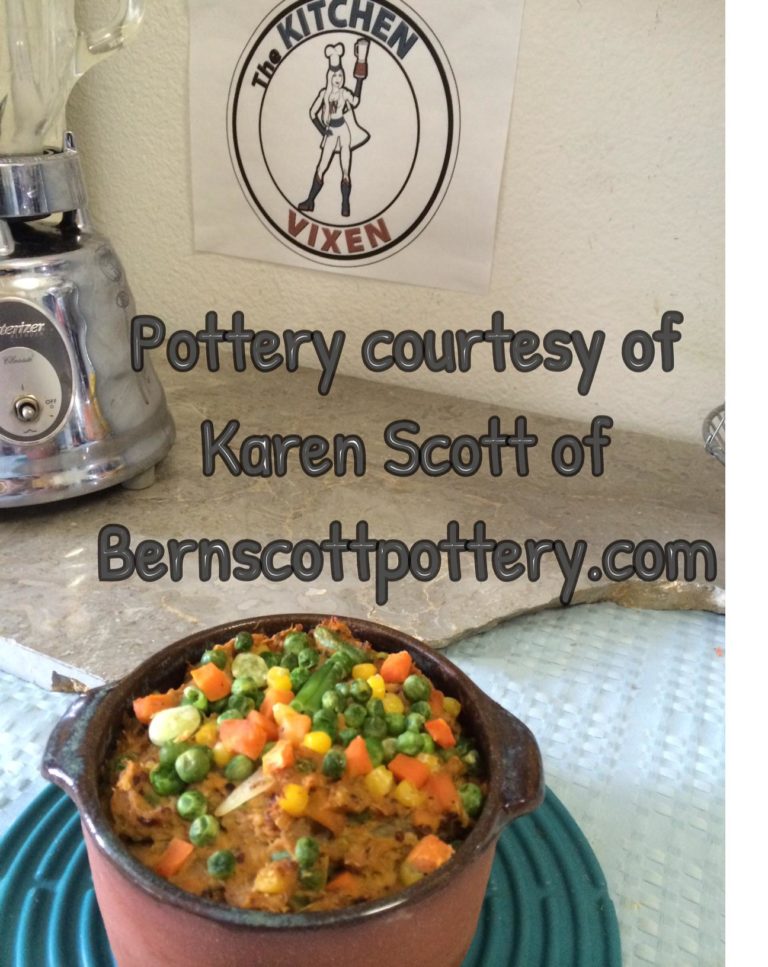Luck O’ the Irish by Elizabeth Brown, MS, RD
My grandfather was a “wee lad,” as he would call himself, when he arrived in America. So by the time I came into his life, he no longer had that iconic Scottish brogue. While my great grandmother, whom I was fortunate enough to know as a child, did have a very heavy brogue. When I hear someone speak with a brogue today, it gives me a warm feeling.
I loved visiting my great grandmother when I was a wee lass myself. We would have tea with milk and sugar to sip with our scones. I was so inspired by this event that the first thing I learned to make was our traditional Scottish scones.
As a child, my grandfather also introduced me to the rich taste of lamb. Although I follow a mainly vegetarian diet today, I still appreciate the distinct aroma of lamb. The smell of lamb brings back fond memories, and smell is the closest link to memory.
The Irish also enjoy lamb in some of their traditional recipes. Irish stew is in fact made with mutton—lamb that is more than one year old. If the lamb were butchered within the first year, the meat simply is called lamb.
According to Historians, Irish stew was created as a way to camouflage meat. When the taxman came to collect taxes, families that wanted a “tax break” would have this traditional stew on their stove made with onions, parsley, potatoes and mutton. Something to think about with tax season here!
Although the mutton might be hidden visually, I can’t imagine that its aroma could be so easily masked. Anyone who has enjoyed lamb is familiar with its distinct fragrance.
Today, some Irish stew recipes also include carrots, leeks, parsnips and turnips. We had parsnips and turnips at our traditional family meals but my grandfather would mash them up and add rich creamy butter, salt and pepper and call them “bash-ed neeps.” That name always made me giggle, especially when my grandfather said it. He was such a lively man. I remember him always in the kitchen cooking up a storm and singing his made-up songs.
To make some memories of your own, please enjoy these traditional Celtic recipes. You can add clover to your stew for some extra “Luck O’ the Irish” or at the very least use clover honey in your tea with almond milk. I’ve changed some ingredients, but the memories live on.
past Scottish Scones
2 cups Scottish oats
2 cups whole wheat pastry flour or combine brown rice and millet flour to make Gluten-free
3/4 cup dry sweetener (sucanat or maple sugar in place of white sugar)
1/2 teaspoon cinnamon
1/4 teaspoon nutmeg
1 tablespoon baking powder
1 teaspoon baking soda
1 teaspoon sea salt
3/4 cup organic butter
3/4 cup organic milk from grass-fed cows OR non-GMO soy milk
1 cup raisins or any chopped dried fruit
Preheat oven to 375 degrees. Mix dry ingredients except for one cup of oats. Cut in the butter until crumbly, then add remaining one cup of oats and dried fruit. Add milk. Mix gently with folding strokes until thoroughly combined. Let dough absorb liquid. Shape into a ‘bar,’ four inches wide and two inches thick. Use a chef’s knife to divide the bar in half, then half again. So you have four sections. Then slice across like you’re cutting a sandwich crosswise. Brush with milk. Dust with cinnamon and sugar. Bake 15-20 minutes. Enjoy with tea.
Irish Stew
1 medium onion, rough chop
Buy organic vegetables. Wash, scrub and peel all of the vegetables but save the peelings for stock
2 potatoes, chopped into large pieces
2 turnips, chopped
2 parsnips, chopped
3 carrots, chopped
1 bunch leeks, white part cut in half and sliced into thin half moons
1 sprig fresh rosemary
2 bay leaves
2 sprigs fresh thyme
1/2 cup chopped fresh parsley for garnish
1/2 head green cabbage, steam sauté in your mineral rich vegetable broth
Wash vegetables in a clean sink filled using a solution of 1/4 white vinegar to 3/4 cool water. Peel and chop the vegetables. Throw all of the clean peels into a large pot. Fill with water. Cover with a lid. Bring to a boil and simmer for 30 minutes. Drain stock. Preserve liquid. Brown mutton or tempeh in stock. Add vegetables and brown. Add herbs and stir. Add broth and simmer 30 minutes. Serve on a bed of steamed cabbage. Garnish with parsley.



